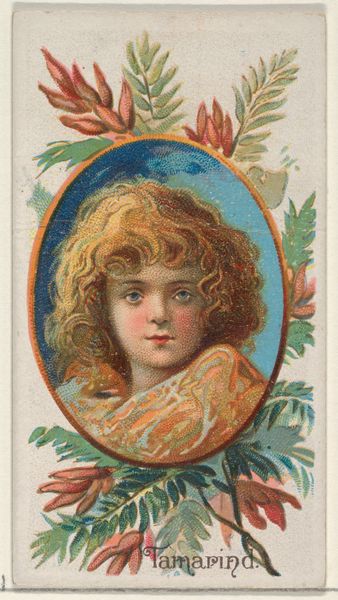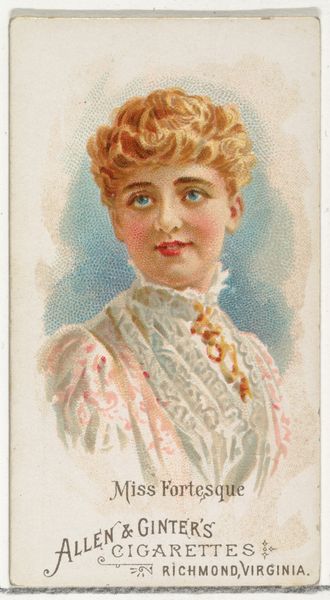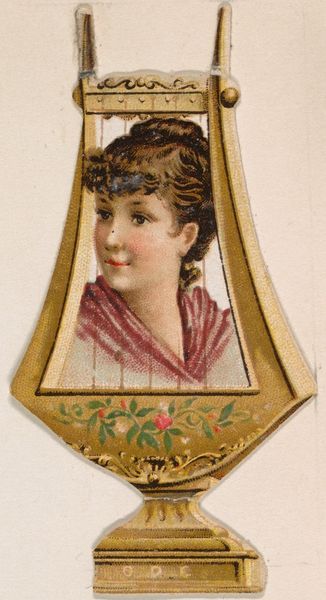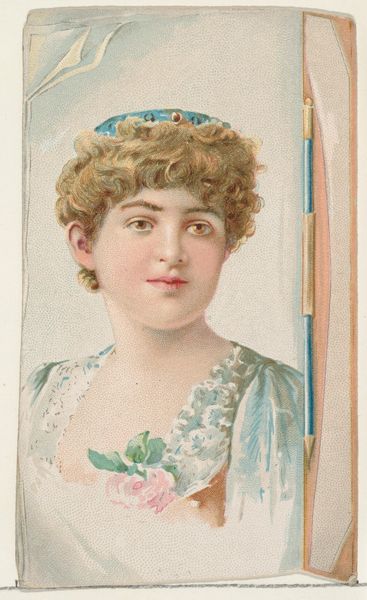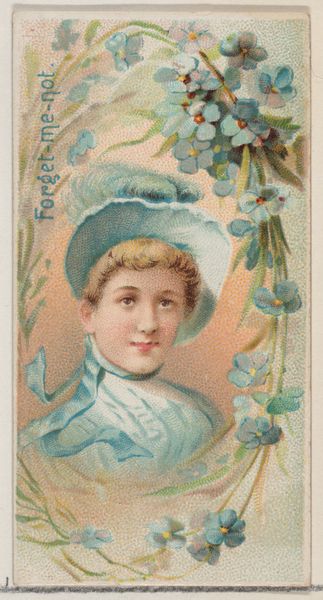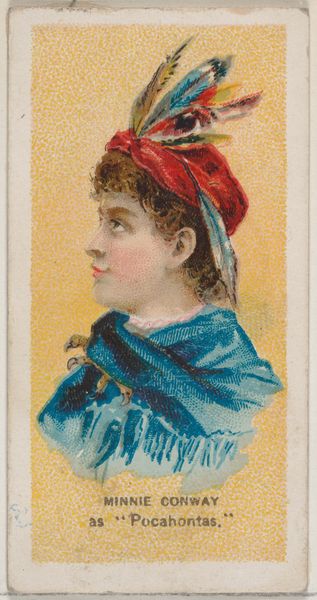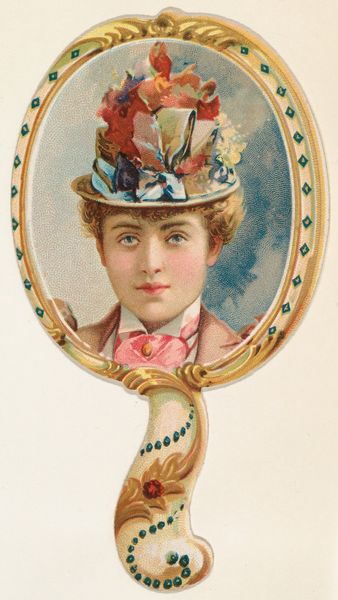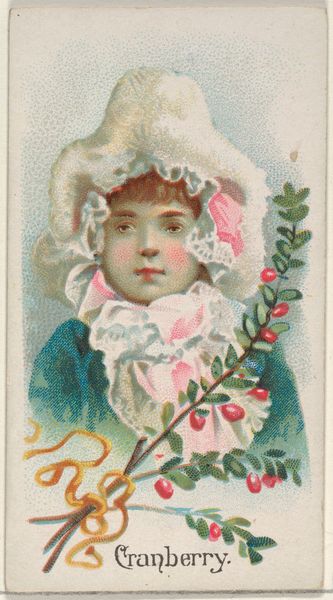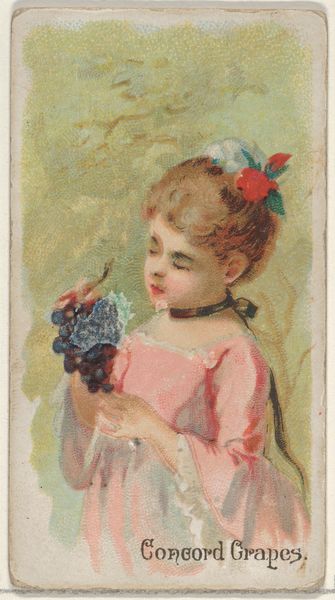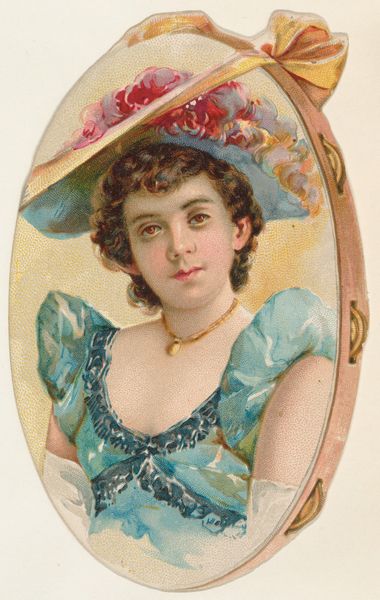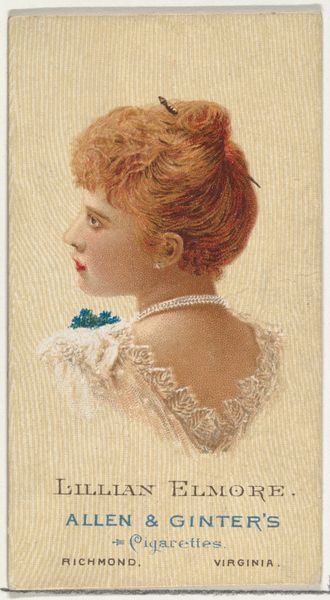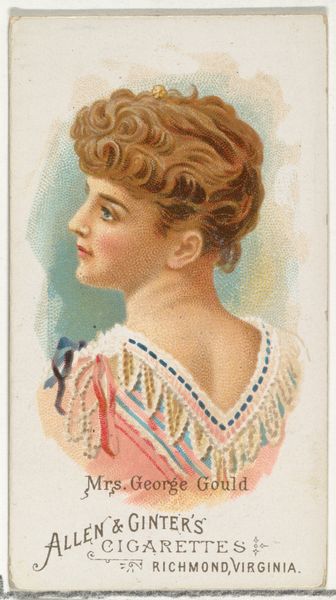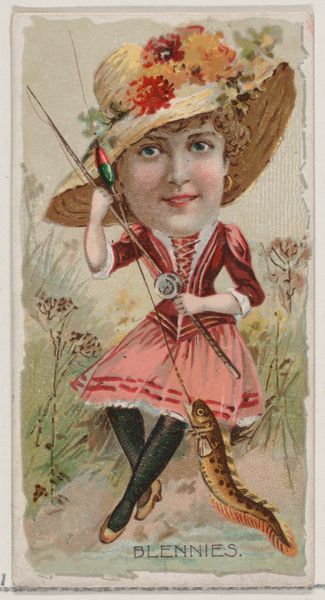
Hand mirror with woman in ruffled white collar, from the Novelties series (N122) issued by Gail & Ax Tobacco to promote Navy Long Cut 1889
0:00
0:00
drawing, graphic-art, lithograph, print
#
portrait
#
drawing
#
graphic-art
#
lithograph
# print
#
figuration
#
coloured pencil
#
portrait art
Dimensions: Sheet: 4 1/4 × 2 9/16 in. (10.8 × 6.5 cm)
Copyright: Public Domain
Curator: Isn't it charming? The work before us, a lithograph titled "Hand mirror with woman in ruffled white collar," originates from an 1889 series of novelties by Gail & Ax Tobacco. Editor: It has such a delicate, almost ephemeral quality. The pastel shades, the soft rendering of the woman's features... there's a hint of longing in her expression. Curator: The image was actually designed as promotional material, a small token included with Navy Long Cut tobacco products. The woman, framed within the hand mirror, embodies a sort of idealized femininity that was carefully constructed and marketed to appeal to a specific demographic. Editor: The hand mirror itself, of course, is laden with symbolism. Historically, it represents vanity, self-reflection, and perhaps a certain level of privilege. The woman’s direct gaze meets ours, almost as if to challenge that assumption. Curator: It’s interesting you say that, as it touches upon the politics of representation at play here. While ostensibly a free gift, these types of images reinforced prevailing beauty standards and social hierarchies. The subject is certainly not just any woman; she's presented as refined, embodying the aspiration of the era. Editor: Absolutely. And it brings to mind the broader iconography of mirrors across cultures. Mirrors can serve as portals to other worlds, representing illusion versus reality or the conscious versus the subconscious. Is the viewer really seeing a genuine representation of beauty, or is it a calculated image designed to entice? Curator: I think it reflects on the evolving consumer culture too. The very existence of such elaborate promotional items highlights the increasing importance of branding and visual marketing strategies at the turn of the century. The Gail & Ax Company sought not just to sell tobacco but to create an entire lifestyle association. Editor: Precisely. We’re really dissecting how a seemingly simple, lovely image actually tells a complex story. Curator: It invites consideration of art’s function within societal power structures, and the ways industries leverage images to establish cultural values. Editor: Indeed. Seeing how visual strategies endure is especially powerful, prompting us to critically consider those ever-present themes of representation.
Comments
No comments
Be the first to comment and join the conversation on the ultimate creative platform.

